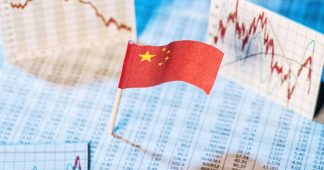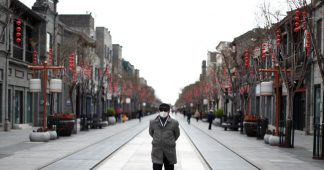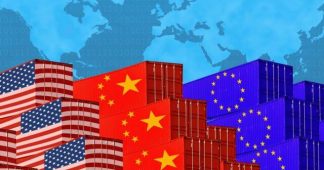Dec 13, 2021
This analysis of China’s response to the COVID-19 pandemic has been submitted as a contribution to the WSWS Global Workers’ Inquest into the COVID-19 Pandemic. The WSWS is respecting a request that the author’s identity not be publicly disclosed.
***
One of the most striking facts about the pandemic is that China, the country from which SARS-CoV-2 first emerged, has suffered very few cases. Since April 2020, the United States has detected nearly 50 million cases, but China, with four times the population, has detected just over 10,000.
There are two main types of reaction to this fact in the West. The first, increasingly rare, is disbelief. Even major Western media outlets hostile towards China have long since accepted that China’s case counts are extremely low. If the pandemic has shown anything, it is that ignoring the virus does not make it go away, and any neglected outbreak in China would quickly spiral out of control, particularly in packed metropolises such as Shanghai and Beijing. Such an outbreak would be visible to foreign correspondents, not to mention the hundreds of thousands of foreigners living in China. And as we will see, the measures China takes to combat outbreaks are highly visible and impossible to keep secret—indeed, they depend critically on widespread participation of the population.
The second type of reaction is to paint China as a draconian hellscape, in which the citizens live under a constant state of lockdown and siege. This is the approach taken recently by the New York Times in an article titled, “Near-Daily Covid Tests, Sleeping in Classrooms: Life in Covid-Zero China.” The article focuses on one small (by Chinese standards) city on the border of Myanmar. The picture it paints is grim:
[T]he residents of Ruili — a lush, subtropical city of about 270,000 people before the pandemic — are facing the extreme and harsh reality of living under a “Zero Covid” policy when even a single case is found.
The article concludes with a chilling statement by a resident of Ruili: “‘The ordinary people,’ [Li] sighed, ‘have no way to live.’”
Yet Ruili is one city with 270,000 residents in a country of 1.4 billion people. Is Ruili truly representative of “life in Covid-Zero China”? The direct answer is that Ruili is an extreme outlier in China: It sits directly on the border of a region of Myanmar controlled by an armed rebel group and is known as a center of cross-border smuggling. Smugglers carry not only illegal goods into Ruili, but, from time to time, the virus as well. Why, then, did two New York Times reporters (stationed in Hong Kong and Beijing), focus their article on this far-flung town?
The answer is that the New York Times focuses on Ruili precisely because it is not representative of the situation in the vast majority of China. The Times’ coverage largely ignores the experience of people in the vast majority of China, including in major cities many times the size of Ruili (270,000 people), such as Shanghai (25 million people), Beijing (22 million people) and Guangzhou (19 million people).
What, then, is life like in the vast majority of “Covid-Zero China”? What measures are used to maintain zero, or close to zero, cases in the country?
China controlled its initial outbreak in early 2020 using strict lockdowns, particularly in the epicenter of the outbreak, in Wuhan. As cases subsided and Chinese cities came out of lockdown, the government imposed strict quarantine rules on incoming international travelers in order to prevent reintroduction of the virus into the country. A recent negative PCR test is required before even boarding a flight to China. After landing, passengers are again tested and then taken directly from the airport to a quarantine hotel, where they remain for two to three weeks without stepping outside their door. They are tested regularly, and food is delivered directly to the room by workers in full protective gear.
Many travelers have documented their experiences going through this system in “quarantine vlogs,” such as those of a Canadian YouTuber in a series of videos. This rigorous quarantine system serves as a fairly reliable barrier against the virus, such that life inside the country’s borders has been relatively normal since the end of the first wave in the spring of 2020. Businesses, such as restaurants, bars and movie theaters, have been open throughout China. This is perhaps most strikingly illustrated by images of packed night clubs and massive pool parties in Wuhan in late 2020, or, more prosaically, by interviews with normal people on the streets of Shanghai in the fall of 2020. Yet the quarantine barrier is not perfect, and more than a dozen small outbreaks have occurred in different parts of China over the last year and a half.
The image above shows, in blue, the number of daily infections [1] in China since the end of the first wave in April 2020. It shows, in orange, the total number of people in quarantine. China has seen several small outbreaks, which are typically isolated to one or a few cities, and which are typically controlled within a few weeks. The city or province through which each outbreak entered China is labeled by arrows above. In order to control each outbreak, close contacts of infected people are quarantined, as can be seen above in the spike of quarantined people during each outbreak. Since April 2020, the peak number of new infections detected on a single day was just under 200, and the peak number of people ever in quarantine at any given time was just over 50,000. For comparison, the cumulative number of people quarantined in China during the entire pandemic is slightly larger than the number of people who have died of COVID-19 in the United States.
The following is an example of how the virus can penetrate the quarantine barrier. On July 10, 2021, a plane from Moscow carrying a traveler infected with the Delta variant landed in Nanjing. Workers cleaning out the interior of the cabin became infected. These same workers also cleaned airplane cabins for domestic flights, and therefore spread the virus to people in the domestic terminal. Because their work could bring them into contact with infected international travelers, the cleaners were regularly tested for the virus, and the outbreak was detected 11 days later, on July 21, 2021. However, by that point, the virus had already been carried far beyond the airport. It eventually spread to cities in over a dozen provinces, peaking at nearly 100 new infections detected per day before it was brought under control in mid-August. After this outbreak, changes were made to the operation of airports to reduce the risk of a similar breach recurring.
The Nanjing outbreak demonstrates that border quarantine measures alone cannot completely prevent the spread of the virus. The Chinese government refers to its policy as a “dynamic zero” policy. This means that the virus will occasionally manage to re-enter the country and cause small clusters of cases (for example, through illegal border crossings by smugglers in Ruili), but that a rapid public health response will ultimately bring cases back down to zero.
Controlling an outbreak in 15 days
In order to see how China’s epidemic control measures work, we will take a look at how a recent outbreak in one particular city was handled.
With an urban population of over 20 million people, Chongqing may be the largest city that most people outside of China have never heard of. It lies in a mountainous area of Southwest China, at the confluence of the Yangtze and Jialing rivers. The history of the city goes back over 3,000 years. During the Japanese invasion in the 1930s and 40s Chongqing served as the wartime capital of China because of its position deep in the interior of the country.
During the initial coronavirus outbreak in Wuhan, in January 2020, Chongqing began seeing COVID-19 cases and, like most of China, went into lockdown. The city began easing restrictions in March 2020, and restaurants started to reopen for in-person dining. Schools resumed in-person classes in April and May. After emerging from lockdown, Chongqing detected no new local infections for more than a year. [2]
Chongqing’s first new substantial outbreak was noticed when a 32-year-old man presented at a hospital with a fever on the afternoon of November 1, 2021. A PCR test came back positive the next day, triggering a massive response by the city’s health agencies. The discovery was immediately announced by the city government. By the end of the day, five more people had tested positive and 279 people were in quarantine, including all of the five additional people who would test positive over the next 10 days.
It quickly became clear that the core of the Chongqing outbreak was a group of employees at a local energy company. Contact tracing revealed the original source of the outbreak in Chongqing to be an employee of the company who had recently visited a city in northern China that was experiencing an outbreak. Following his visit, he traveled home to Sichuan, stopping in Chongqing and interacting with coworkers at the energy company. It would later emerge that he was already infected with the virus during his visit to Chongqing: He tested positive on November 2, the same day the first case was discovered in Chongqing.
Within a day of first detection, the city of Chongqing closed off the headquarters of the energy company and other buildings which had been visited by the infected people. The districts of the city in which the infected individuals lived announced mass testing campaigns and gathered samples from 125,000 people within 24 hours.
The patients’ apartment complexes were strictly locked down, with food and other vital supplies delivered regularly by city health workers (a Canadian YouTuber visited the building where the first patient lived, giving a window into what life for the residents looked like during the lockdown). Various areas of the city were labeled “high risk zones,” with entry and exit strictly controlled. Throughout the city, mahjong parlors, movie theaters, libraries, museums and other public places where large numbers of people come together were temporarily closed.
In the following days, the number of people in quarantine continued to climb, as more close contacts of the cases were identified. The total number of people in quarantine peaked at close to 1,300 people less than a week later.
Because of the magnitude of the response, only a handful of people ever tested positive, all of whom had been quarantined on the first day. On November 17, with no new infections having been detected outside of quarantine for more than two weeks, the city announced that the outbreak had been controlled. Chongqing was officially declared a “low-risk zone.” Restrictions were relaxed, and life went back to normal.
It took 15 days to go from the first detected case until the official end of the outbreak.
Genetic sequencing of the virus from the first patient in Chongqing confirmed that this cluster of cases was only a small branch of a wider Delta variant outbreak that began in October in the northern province of Inner Mongolia (the virus most likely entered China from the country of Mongolia). The outbreak was brought to an end in China altogether in mid-November. During this period, cities across China saw small numbers of cases and snuffed out their local outbreaks in much the same way Chongqing did.
Contrary to the common perception in the West, an enormous amount of detailed information about every case is published as a matter of course in China. Public health agencies publish a detailed “activity track” [3] for each person who tests positive, listing the times at which they visited various places in the preceding days, how they were infected (if known), and even the license-plate numbers of the taxis they’ve recently hailed. A typical line from the first patient’s activity track reads,
October 28th, 9:30: took taxi from home (license plate number: Chongqing AD14574) to Wulidian gas station in Jiangbei district to inspect the charging stations; ate at Sister Huang’s Old Hot Pot restaurant in Wulidian with Mr. Ye and Mr. Cao at noon. [4]
One of the purposes of these detailed activity tracks is to alert those who have crossed paths with the infected people. The activity tracks of the cases discovered on November 2 in Chongqing, for example, were all published by the next day. On Chinese social media, activity tracks are widely shared and commented on. Perhaps amused and alarmed by the number of public places the first patient had visited, one Chinese netizen commented, “From the afternoon to the evening of the 27th, ate three meals in three different districts. What kind of person is this? So impressive!” [5]
The image above shows the relationships between the cluster of cases detected in Chongqing in November 2021. As noted above, the outbreak most likely entered Chongqing when a man living in Sichuan (represented by the gray circle labeled “S” above) visited Chongqing in late October 2021, and interacted with coworkers at a local energy company. The Sichuan man had recently been in Lanzhou, in northern China, which was experiencing an outbreak at the time. He infected a few of his coworkers, who subsequently infected a number of other people in Chongqing. Eventually, one employee of the energy company, a 32-year-old man (labeled “c1” above), developed a fever, went to the hospital and tested positive, setting off a massive public-health response. By the end of the day, all the people represented above were in quarantine. The Sichuan man was later investigated for possibly concealing his recent travel to Lanzhou.
One key to the success of Chongqing (and other cities across China) in ending outbreaks is the ability to quickly identify close contacts of infected people. This is done using smartphone-based contact-tracing apps, cell phone location data and interviews with the patients themselves. After the first patient showed up in hospital and tested positive, his close contacts were rapidly identified and sent into quarantine, where they were regularly tested and their health was monitored.
At the same time, the residents of the neighborhoods in which the first patients lived were tested within just a few days, in order to make sure that the outbreak had not spread more widely. If the outbreak had spread more widely into the population, this mass testing would have identified additional infected people, and contact tracers would have followed up on each individual infection, identifying their circle of close contacts. Through this process, every infection in a city can be rapidly identified, and spread can be brought to a halt.
Chongqing was lucky. Only a small cluster of people had been infected by the time the first patient was identified. Not all Chinese cities have been as fortunate, and over the last year a few local outbreaks in China have taken weeks to completely control.
This short period in early November 2021 is the only time since April 2020 that Chongqing has implemented significant restrictions on daily life. For most of the last 20 months, while virtually every major city outside of China has endured multiple serious waves of infection and death, life in Chongqing—as in most of China—has been relatively normal.
The “dynamic zero” policy
As we have seen above, local public health departments are key to the implementation of China’s “dynamic zero” policy. If a case appears in a city, contact tracers must immediately be sent to identify close contacts, and testing of close contacts and affected neighborhoods must be carried out as rapidly as possible. In order to end an outbreak, local public health departments must quickly understand the outbreak’s scope: Is it a handful of cases, or a wider outbreak that has spread undetected? The Chinese Center for Disease Control and Prevention (China CDC), an organization modeled on the US CDC, has repeatedly emphasized (see here and here) the centrality of community-level public health work (and the need to strengthen it) to the country’s COVID strategy.
This has involved significant investment in the public health system at the local level. For example, the central government requires each city to have the capacity to test its entire population within a short time frame. This means two days for cities with populations under 5 million, and within three to five days for cities with populations above 5 million. This local testing capacity is supported by mobile testing labs, which are deployed to regions that have active outbreaks to speed up the screening of the population.
This testing capacity has been repeatedly deployed to end local outbreaks. In Guangzhou, a metropolis in southern China the size of New York City, 18 million residents were tested in just three days during a Delta variant outbreak in June 2021. The outbreak was successfully contained with limited lockdowns of only a few neighborhoods, aided by mass testing and extensive contact tracing, and was brought to a complete end in less than a month.
In the image above, each circle represents one person who was infected during the outbreak, with the arrows showing who was infected by whom. The first detected case, represented above by the red diamond, was infected in a hospital due to accidental exposure to a patient from abroad, represented by the gray circle. The ability to trace every infection and understand entire chains of transmission is central to China’s ability to control outbreaks.
While local public health agencies are critical; they operate in the context of a larger national strategy to approach the pandemic.
After the end of the initial outbreak in China, in the Summer of 2020, the China CDC laid out its long-term strategy for dealing with the pandemic in an article in the medical journal The Lancet. The China CDC worried that although the first wave had been broken, “a strong suppression effort must continue to prevent re-establishment of community transmission” within China.
The China CDC laid out two alternative strategies that the country could follow: either “containment and suppression” (the “dynamic zero” policy that we have seen above) or “mitigation,” which accepts some level of spread of the virus, but which seeks to lessen its impact. The China CDC judged that “[m]itigation might allow development of herd immunity over a long time, but at a great cost in terms of number of cases, morbidity, and mortality.” The China CDC deemed this policy—which has been followed in most countries around the world—as unacceptable, and instead explained that its goal was to protect the population until a vaccine could be developed and widely deployed:
“The current strategic goal is to maintain no or minimal indigenous transmission of SARS-CoV-2 until the population is protected through immunisation with safe and effective COVID-19 vaccines, at which time the risk of COVID-19 from any source should be at a minimum. This strategy buys time for urgent development of vaccines and treatments in an environment with little ongoing morbidity and mortality. A vaccine response is almost certain to be a global necessity in the COVID-19 pandemic response, preventing infection among those at risk of exposure or medical risk and, ultimately, immunising the population to stop virus importation and transmission.”
China has now fully vaccinated nearly 80 percent of its population, reaching this level of population immunity without suffering widespread infection. However, the continued spread of the virus in countries that have vaccinated substantial portions of their populations and continuing high death tolls in those countries have caused the China CDC to warn against abandonment of the Zero COVID strategy.
The China CDC recently published an assessment of the consequences of embracing the “mitigation” strategy pursued by most countries, concluding that China’s health care system would be quickly overwhelmed by hundreds of thousands of daily COVID-19 cases, and more than 10,000 severe cases each day. “[E]mbrac[ing] certain ‘open-up’ strategies without reservation,” the China CDC warned, would “have a devastating impact on the medical system of China and cause a great disaster within the nation.”
Dr. Zhong Nanshan is a pulmonologist who rose to prominence in 2003 during the original SARS outbreak by speaking publicly about the epidemic and developing a treatment regimen for SARS patients. Now at an age of 85 years, he has played a central role in formulating and communicating China’s response to COVID-19.
In January 2020, Dr. Zhong traveled to Wuhan with a medical team from China’s National Health Commission to investigate the outbreak, and he was the first major figure to announce that SARS-CoV-2 can be transmitted from person to person. In a recent interview, he argued that compared with allowing the virus to spread, the dynamic zero policy is a “relatively low-cost approach,” and that the back-and-forth lifting and reimposition of restrictions in other countries has a greater psychological impact on the population. Dr. Zhong has suggested that how long China’s strict border controls remain in place will depend on how other countries around the world manage to control the spread of the virus, and on how effective vaccines, new drugs and treatments are in reducing its severity.
The outlook for China in the pandemic
Dr. Zhong’s statements are in stark contrast to calls by Western media for China to abandon its Zero COVID policy and embrace a US-style “living with the virus” policy. The Financial Times declares that “Zero-Covid countries have run out of road” and that “China’s self-isolation is a global concern.” The New York Times publishes article after article attacking China’s Zero COVID policy, and even more cynically, attempts to sow fear, uncertainty and doubt about Chinese vaccines. The Guardian asserts that the Chinese people are growing tired of the Zero COVID policy.
The idea that China, which has managed to hold SARS-CoV-2 at bay for the last 20 months while allowing normal life to largely continue, should take advice on epidemic control measures from the Financial Times, the New York Times or the Guardian is clearly absurd. Yet China faces strong pressures to abandon its control policy from other quarters as well. While China’s Zero COVID policy enables normal life with relatively few restrictions within the country’s borders, the strict quarantine regimen for inbound travelers—three weeks—has made international travel difficult. The New York Times has been keen to highlight the difficulty this poses to businesspeople who travel to the country. China also certainly faces the same domestic business pressures as Western countries do, pressing for a lifting of border restrictions and other control measures that could hinder business activity.
With the appearance of the Omicron variant, calls—mostly from outside China—for an abandonment of the “dynamic zero” policy (increasingly loud just a few weeks ago) have been exposed as foolhardy. Responding to early news about Omicron, Dr. Zhong Nanshan emphasized that China will wait and see how the new variant behaves, and whether a new vaccine against it will be needed. Because of its dynamic zero strategy, China has the ability to wait and see from a safe distance. In contrast, countries that are “living with the virus” are flying blind and will not know what sort of risk they are taking with the health of their population until Omicron is already upon them.
China’s experience through the pandemic demonstrates that with a vigorous public health response, societies can contain the spread of SARS-CoV-2. This may explain the repeated, seemingly irrational, attempts by outlets like the New York Times to attack China’s Zero COVID policy, as well as their simultaneous failure to explain to their readership how the policy works.
The epidemic control measures that Chinese people have endured pale in comparison to the price in lives and livelihoods that Americans have paid. Since the beginning of the pandemic, for each person temporarily quarantined in China (a country with four times the population of the United States), one American has died. At the same time, the amount of time spent in lockdown in most cities in China since April 2020 has been minimal. Yet the New York Times would rather have its readership believe that a remote town on the border of Myanmar represents the norm in “Covid-Zero China,” than inform them that over one billion people, in cities such as Beijing, Shanghai and Guangzhou, have lived for 20 months with few restrictions on daily life and have had virtually zero risk from the virus.
Epidemic control measures in Chongqing and elsewhere in China, based upon basic principles of epidemiology and modern technologies, such as PCR testing and smartphone-based contact tracing, have proved to be effective. It is imperative that scientists, workers, and students push for similar life-saving policies to be adopted around the world.
End Notes:
[1] “Daily infections” is defined as the number of new domestic infections, whether symptomatic or asymptomatic. China typically reports the daily number of asymptomatic infections, symptomatic cases, and the number of asymptomatic infections converting to symptomatic cases. The “daily infection” number is the sum of asymptomatic infections and symptomatic cases, minus conversions.
[2] After April 2020, Chongqing did not detect any new local cases until July 31, 2021, when it found two cases. It detected one further asymptomatic infection five days later, on August 5, but no broader outbreak occurred in Chongqing.
[3] In Chinese, “活动轨迹”
[4] In Chinese, “10月28日9点30分从家中打车(车牌号:渝D14574),到江北区五里店加气站查看充电桩,中午在五里店黄姐老火锅与叶某涛、曹某一起用餐。”
[5] In Chinese, “27号下午至晚上在三个不同的区吃了三顿,什么人啊,这么牛逼!”
[6] Wang et al., “Transmission, viral kinetics and clinical characteristics of the emergent SARS-CoV-2 Delta VOC in Guangzhou, China.” The Lancet. 2021. DOI: 10.1016/j.eclinm.2021.101129 .
Published at www.wsws.org
We remind our readers that publication of articles on our site does not mean that we agree with what is written. Our policy is to publish anything which we consider of interest, so as to assist our readers in forming their opinions. Sometimes we even publish articles with which we totally disagree, since we believe it is important for our readers to be informed on as wide a spectrum of views as possible.












